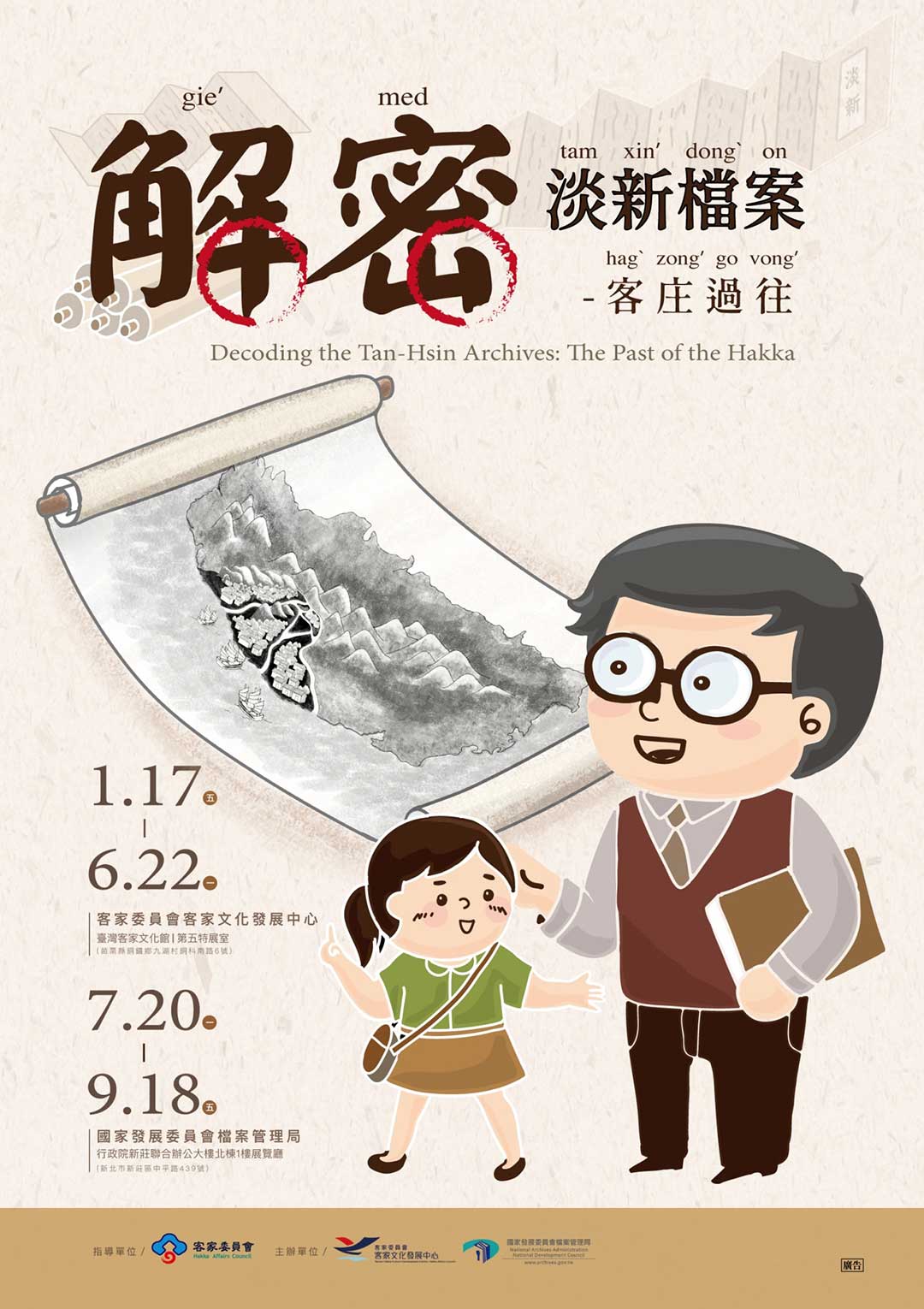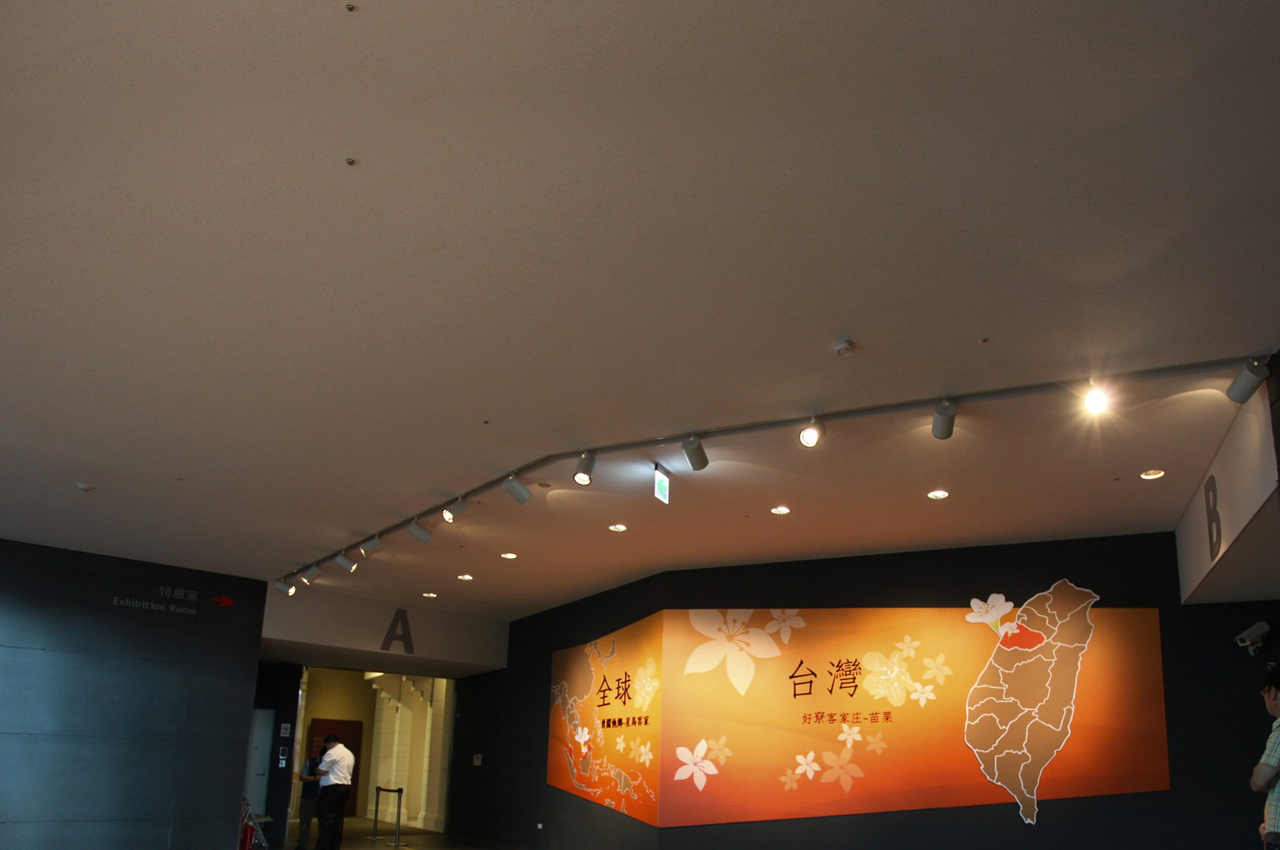Exhibition Review
5th Special Exhibition Hall – Special exhibition of “Decoding the Tan-Hsin Archives: The Past of the Hakka”

Exhibition time:
From January 17th to June 22nd, 2020: Exhibition Gallery 5 of the Taiwan Hakka Museum, Taiwan Hakka Culture Development Center, Hakka Affairs Council

“Decoding the Tan-Hsin Archives: The Past of the Hakka” gieˋ med tam xinˊ dongˋ on-hagˋzongˊ go vongˊ
gieˋ med tam xinˊ dongˋ on-hagˋzongˊ go vongˊ
Description at the entrance of the special exhibition:
Two centuries flashed by
The Tuniou Trench separating the indigenous and Han people was already surrounded by tribes and settlements
Blood and tears intertwined and wove together the glorious but bleak past of the Great Barrier
Fortunately, pieces of memories are preserved in the library
Let us decode the Hakka history through these archives

Unit 1
What are the Tan-Hsin Archives?
maˋ ge he tam xinˊ dongˋ on ?
The Tan-Hsin Archives are the executive and judicial archives of Taiwan’s county governments. The archives include records from 1776 (41st year of the Qianlong reign) to 1895 (21st year of the Guangxu reign) in Tamsui Prefecture and Hsinchu County. They were handed to the Court at the beginning of the Japanese colonial era prior to being gifted to the Taihoku Imperial University for academic use.

Unit 2
Whose land is this?
maˋ nginˇ ge tuˋ ti
The Tan-Hsin Archives recorded territorial conflicts between various ethnicities, which officials tried to prevent by separating the conflicting parties with the Tuniou trench, barriers, and the Tuntian system. The government built the Tuniou trench to serve as a passive separation strategy in the beginning, but later adopted an active retaliation position by implementing the barrier defense system. The blurred boundaries were then replaced by clearly-drawn borderlines.

Unit 3
How to develop land in mountainous areas?
ngiongˋ banˊ koiˊ fadˋ nui sanˊ ?
Chinese immigrants who wished to develop lands in Taiwan created capitals in exchange for the right to develop lands from the government or indigenous tribes. Besides possessing private armed forces, Chinese immigrants had to recruit contracted farmers and cooperate with them during land development operations. After succeeding, Chinese immigrants had to pay taxes to the government or the indigenous peoples.

Unit 4
What kinds of resources are available in the mountains?
nui sanˊ iuˊ maˋ ge ziiˊ ngienˇ ?
In the 19th century, Taiwan’s tea and mothballs were exported all over the world by foreign merchants. A supply chain was thus formed, linking the indigenous people in the mountains and the Hakka, southern Fujian immigrants, with foreign merchants in port areas, facilitating development in Northern Taiwan and areas adjacent to the mountains.

Unit 5
The Rise of Hakka women
hagˋ gaˊ ngˋ lid hiˋ sii
Women played a significant role in the development of Northern Taiwan. The Tan-Hsin Archives record stories of women toiling hard in their lives. Women practically participated in land development activities in the beginning and later on ensured the continuance of lineage by cementing family bonds and mustering family power despite the drastic changes in policies, ruling parties, and the environment.

Unit 6
Memories of the Archives: Hakka spirit and life
Dongˋ on gi i: hagˋ gaˊ jinˊ siinˇ
The Tan-Hsin Archives record the 119-year history between the reign of Emperor Qianlong and Emperor Guangxu. Official documents in the archives not only provide a sneak peek into the power structure of the Qing government, but also reflect various aspects of life under different social classes in Taiwanese society at that time. We can also see how the Hakka people strived hard to settle in Taiwan.




